Farms have long inspired artists, offering serene landscapes, rural scenes, and a connection to the earth that resonates deeply in the human experience.
Many artists over the years have painted some wonderful farm paintings. Here’s a look at 20 of the most essential farm-themed paintings, each a masterpiece in its own right over the years with the artist who painted them and the year it was painted.
Table of Contents
- The Art Of Agriculture: 20 Iconic Farm Paintings
- 1. The Gleaners (1857) by Jean-François Millet
- 2. American Gothic (1930) by Grant Wood
- 3. Haystacks series (1890-1891) by Claude Monet
- 4. The Harvesters (1565) by Pieter Bruegel the Elder
- 5. Christina’s World (1948) by Andrew Wyeth
- 6. The Angelus (1859) by Jean-François Millet
- 7. The Cornfield (1826) by John Constable
- 8. The Potato Eaters (1885) by Vincent van Gogh
- 9. Farmhouse in Provence (1888) by Vincent van Gogh
- 10. Red Vineyard at Arles (1888) by Vincent van Gogh
- 11. Haying, Conway Meadows (1860) by Albert Bierstadt
- 12. Farm Garden with Sunflowers (1905-1906) by Gustav Klimt
- 13. The Four Seasons series (1660s) by Nicolas Poussin
- 14. Farm at Duivendrecht (c.1916) by Piet Mondrian
- 15. The Large Farm (1648) by Paulus Potter
- 16. The Horse Fair (1853) by Rosa Bonheur
- 17. Apple Picking at Éragny-sur-Epte (1888) by Camille Pissarro
- 18. Farmhouse with Two Figures (1890) by Vincent van Gogh
- 19. The Sower (1850) by Jean-François Millet
- 20. Farmers Planting Potatoes (1884) by Vincent van Gogh
- Related Questions
The Art Of Agriculture: 20 Iconic Farm Paintings
Artists have been captivated by the allure of farms for centuries, drawn to their tranquil vistas, pastoral beauty, and the profound bond with nature they represent. Below are 20 of the most significant farm-inspired paintings, each a remarkable testament to this enduring theme.
1. The Gleaners (1857) by Jean-François Millet

- Why Famous: This painting epitomizes the backbreaking work of rural life. It depicts three women gleaning a field of stray grains after the harvest, highlighting the plight of the lower class.
2. American Gothic (1930) by Grant Wood

- Why Famous: A quintessential depiction of rural America. The stern faces of a farmer and his daughter, set against a Gothic Revival house, have become a cultural icon.
3. Haystacks series (1890-1891) by Claude Monet
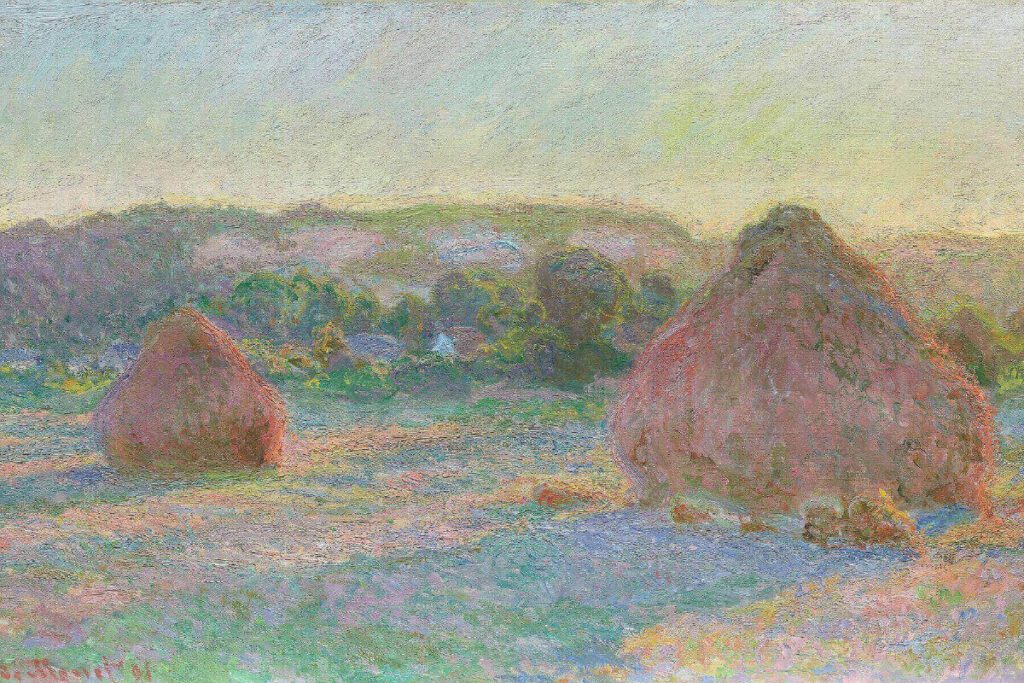
- Why Famous: Monet’s series of haystacks at different times of day and seasons showcase his fascination with light and its impact on color.
4. The Harvesters (1565) by Pieter Bruegel the Elder

- Why Famous: This work captures the essence of peasant life in the 16th century, showing workers in the fields during harvest.
5. Christina’s World (1948) by Andrew Wyeth
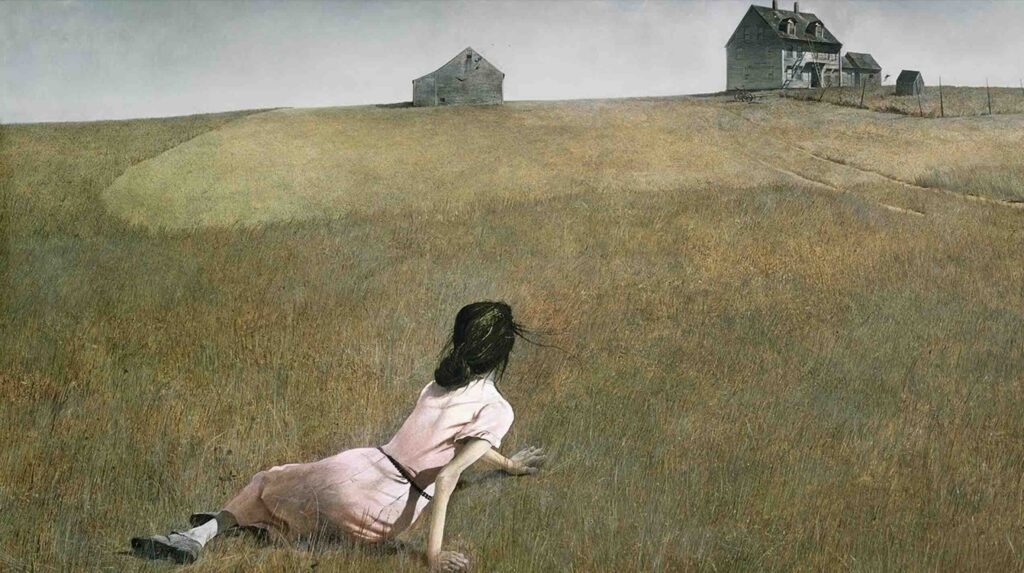
- Why Famous: Though not depicting farm labor, this painting’s view across a field to a distant farmhouse is iconic. It’s known for its evocation of longing and isolation.
6. The Angelus (1859) by Jean-François Millet
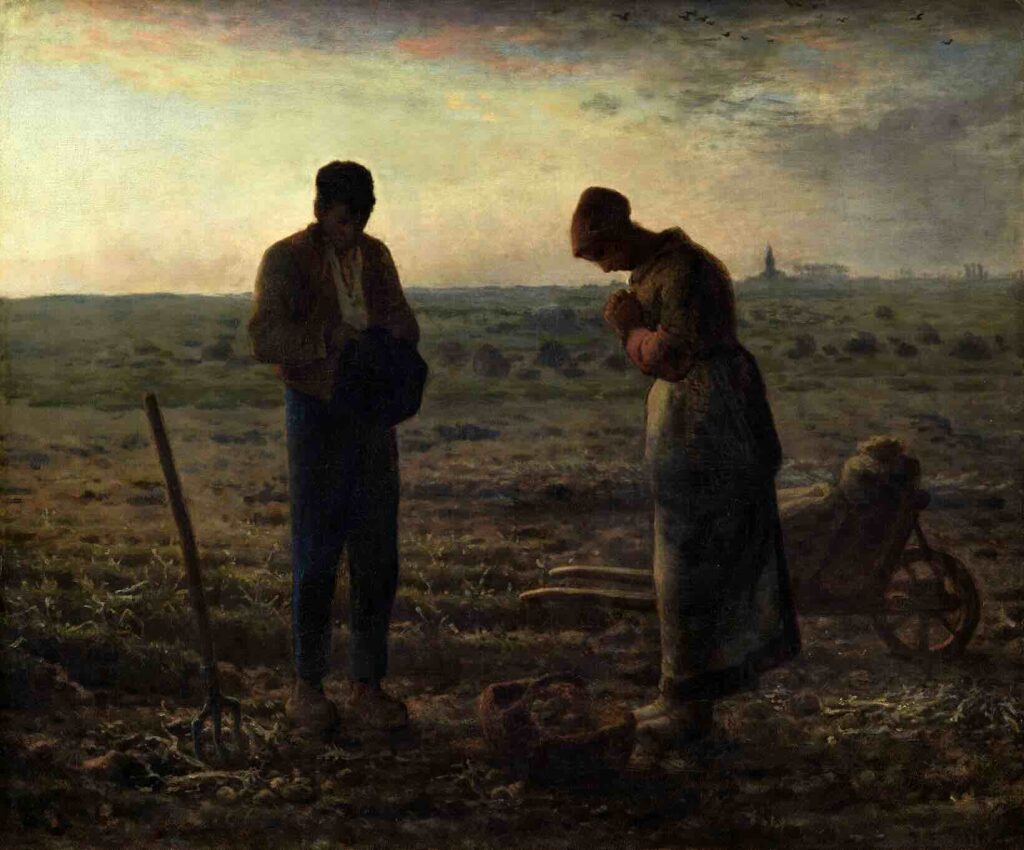
- Why Famous: Another Millet masterpiece shows two peasants pausing for prayer at dusk, symbolizing purity and the rural work ethic.
7. The Cornfield (1826) by John Constable
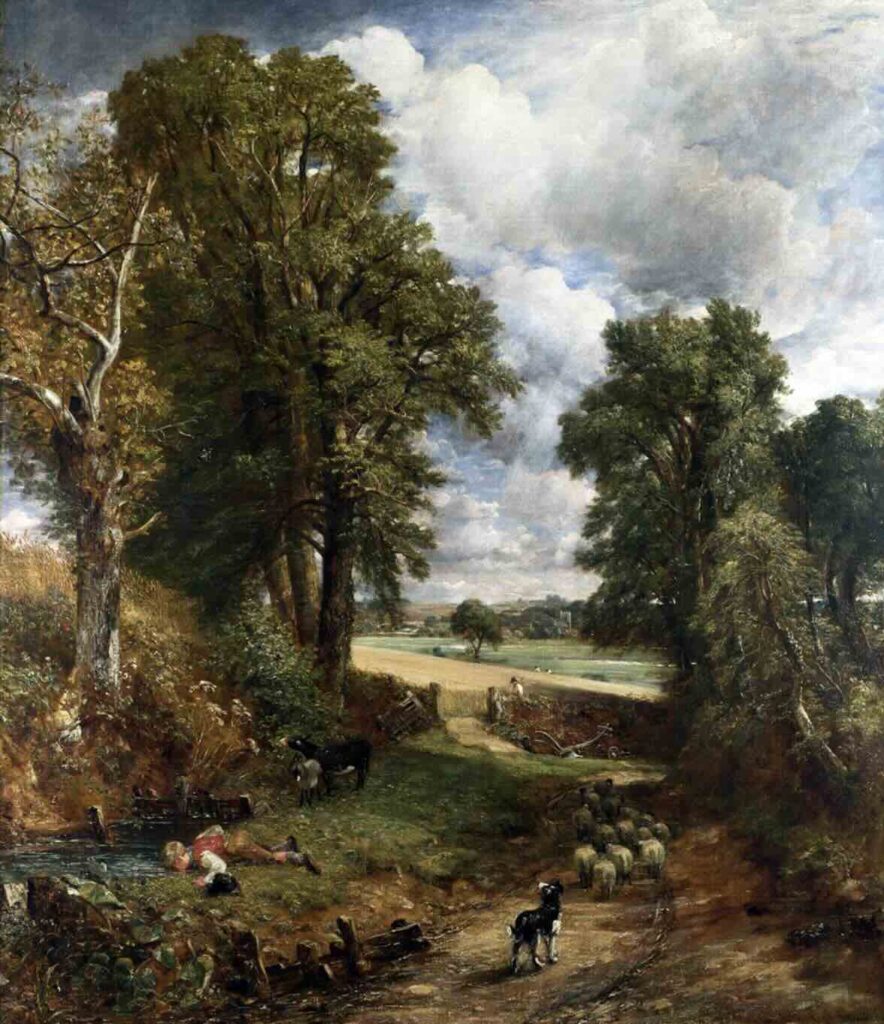
- Why Famous: The Constable’s deep connection to the English countryside is evident in this vivid portrayal of rural life.
8. The Potato Eaters (1885) by Vincent van Gogh
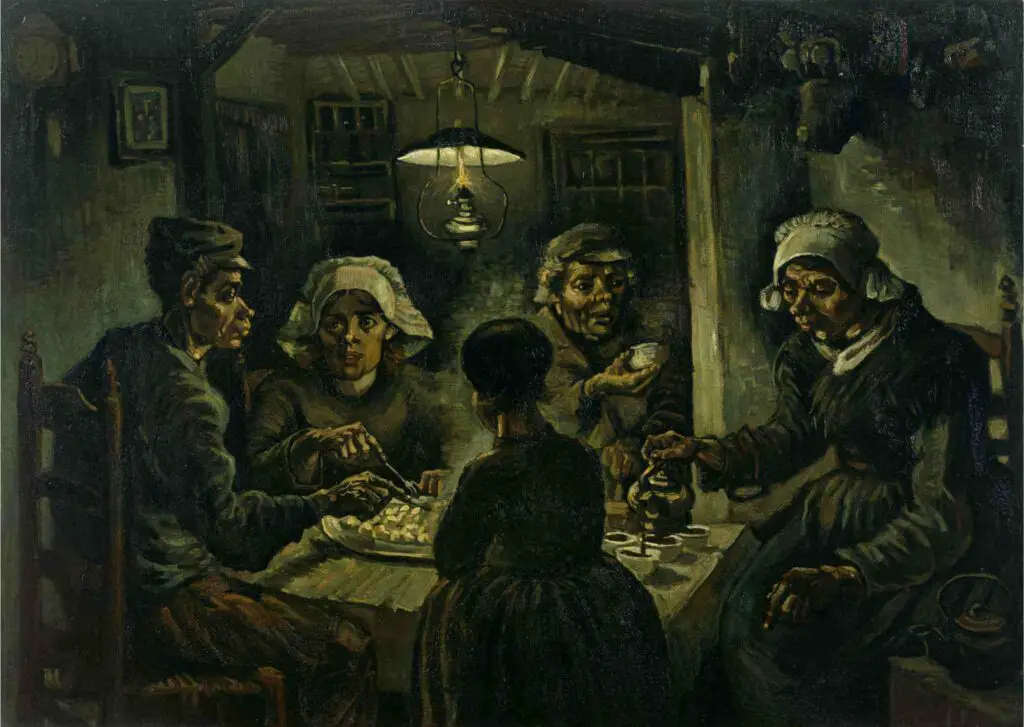
- Why Famous: This painting illustrates the harsh reality of rural poverty, depicting a peasant family eating potatoes in their dimly lit home.
9. Farmhouse in Provence (1888) by Vincent van Gogh
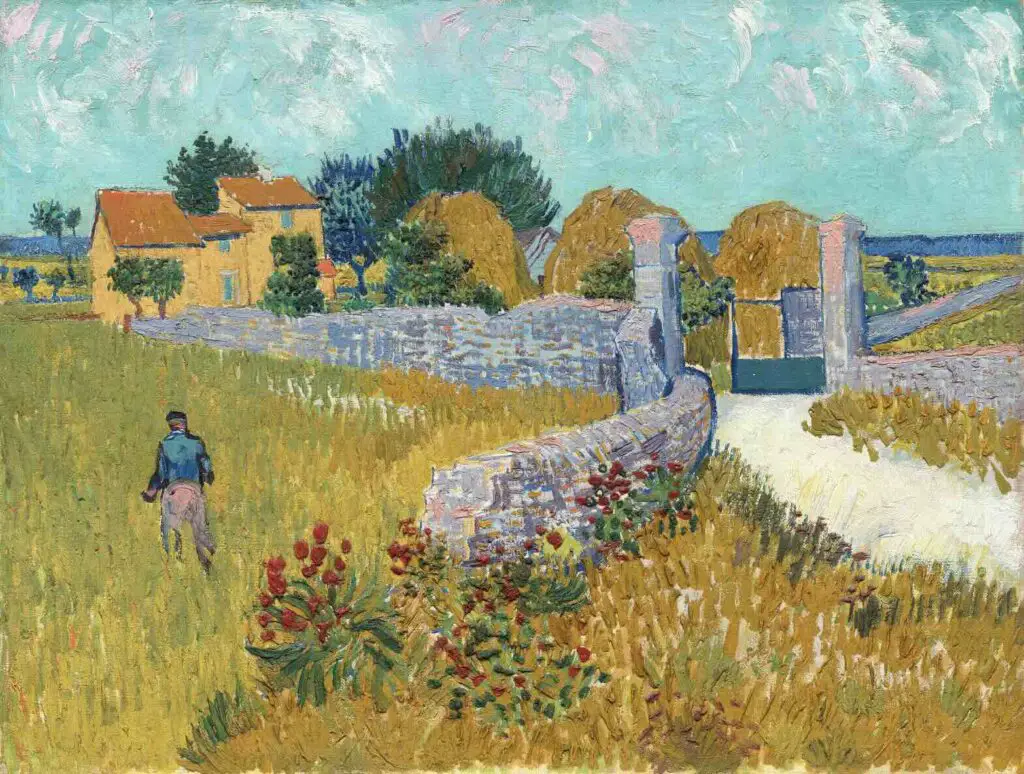
- Why Famous: Van Gogh’s distinctive style captures the beauty and simplicity of a rural home amidst the vibrant Provencal landscape.
10. Red Vineyard at Arles (1888) by Vincent van Gogh
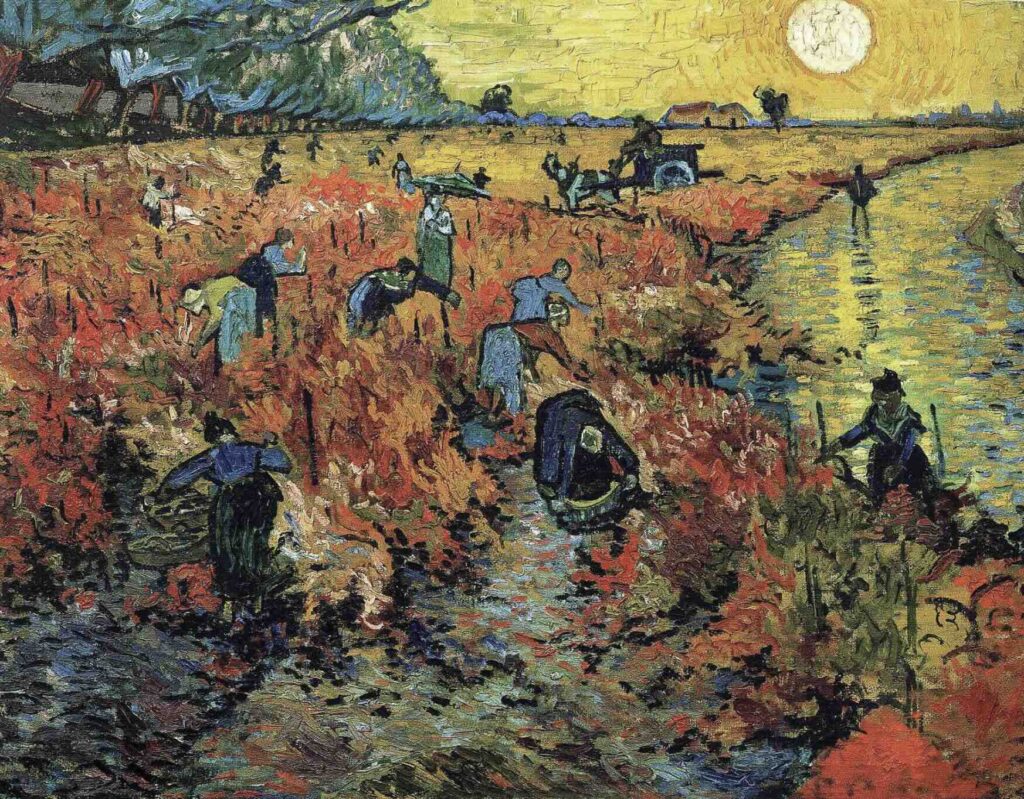
- Why Famous: Believed to be the only painting Van Gogh sold during his lifetime, it vividly captures the vibrant colors of a vineyard at harvest.
11. Haying, Conway Meadows (1860) by Albert Bierstadt
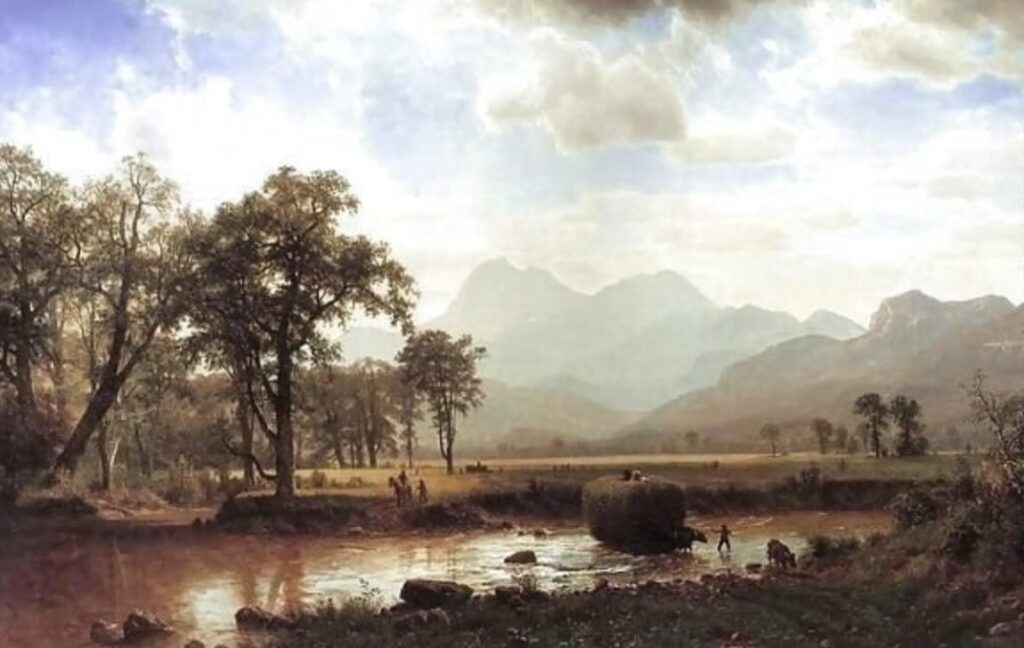
- Why Famous: Bierstadt’s painting is notable for its luminous quality, depicting the vast American landscape and the harmony of humans and nature.
12. Farm Garden with Sunflowers (1905-1906) by Gustav Klimt
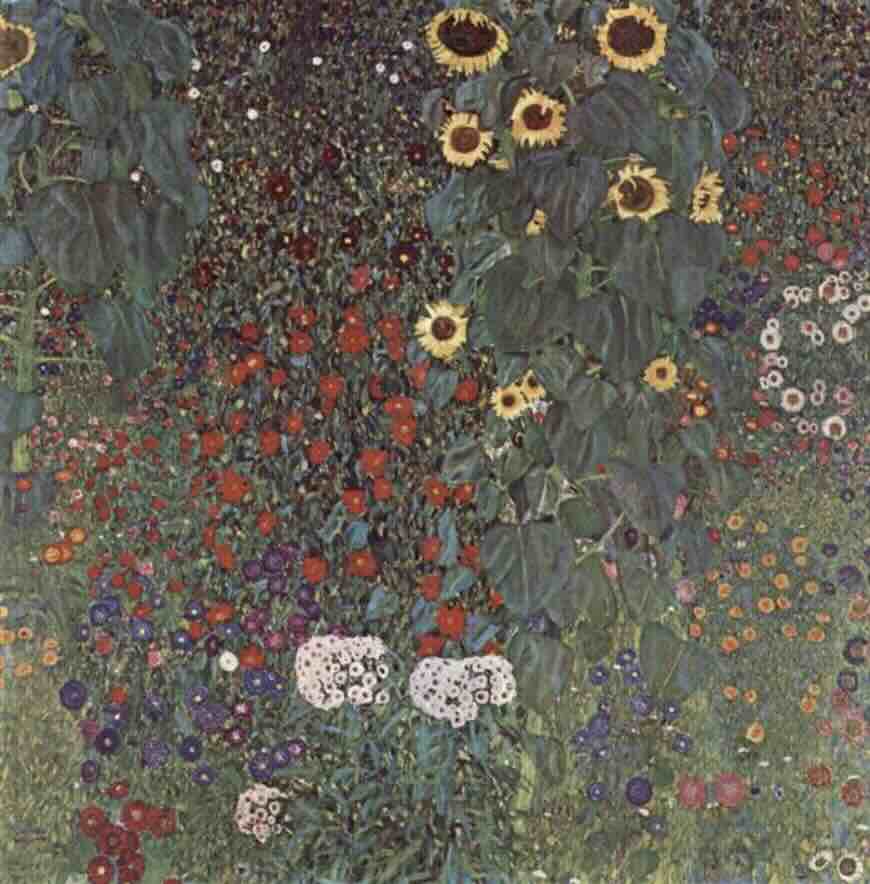
- Why Famous: While not a traditional farm scene, Klimt’s lush, vibrant portrayal of a garden adjacent to a farm reflects the beauty and abundance of nature.
13. The Four Seasons series (1660s) by Nicolas Poussin
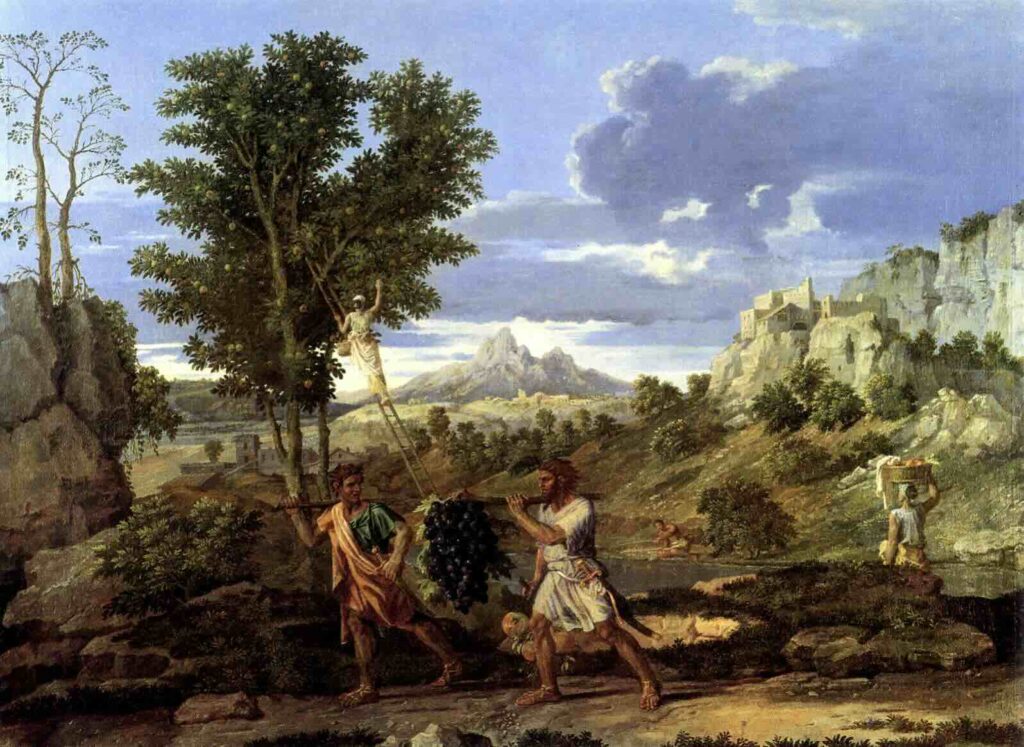
- Why Famous: This series allegorically represents the seasons through rural landscapes and activities, blending classical ideals with naturalism.
14. Farm at Duivendrecht (c.1916) by Piet Mondrian

- Why Famous: This work shows Mondrian’s transition from naturalism towards abstraction, focusing on structure in the rural landscape.
15. The Large Farm (1648) by Paulus Potter
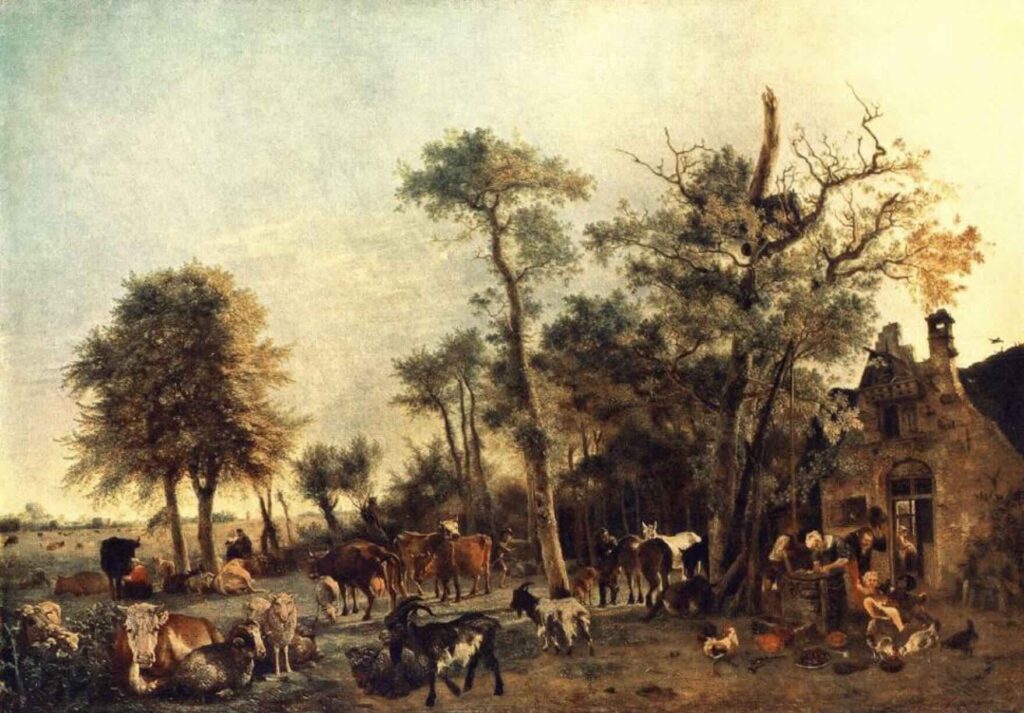
- Why Famous: Potter’s painting is notable for its detailed depiction of animals and farm life in the 17th century.
16. The Horse Fair (1853) by Rosa Bonheur
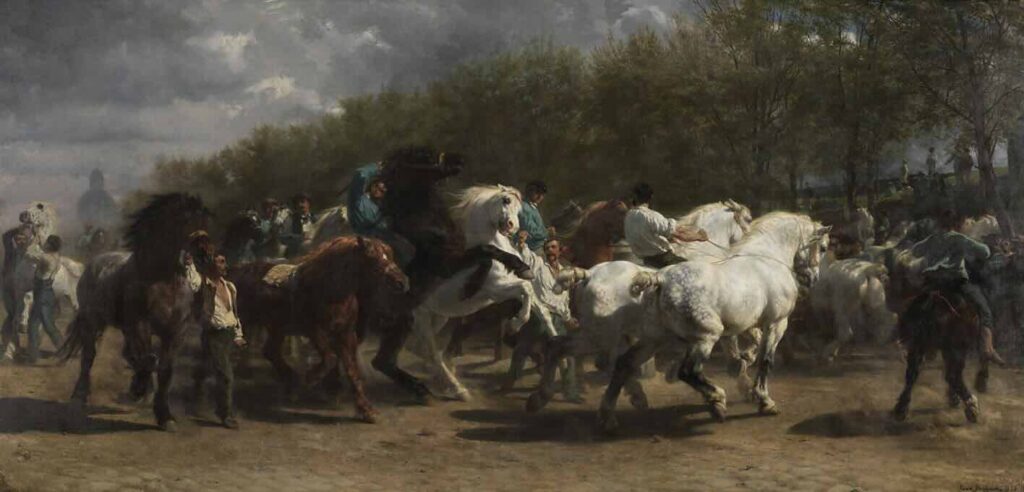
- Why Famous: Although more focused on horses than farming, this painting is celebrated for its dynamic representation of the animals and Bonheur’s role as a prominent female artist.
17. Apple Picking at Éragny-sur-Epte (1888) by Camille Pissarro

- Why Famous: Pissarro captures the essence of rural labor with a peaceful, idyllic scene of apple picking.
18. Farmhouse with Two Figures (1890) by Vincent van Gogh
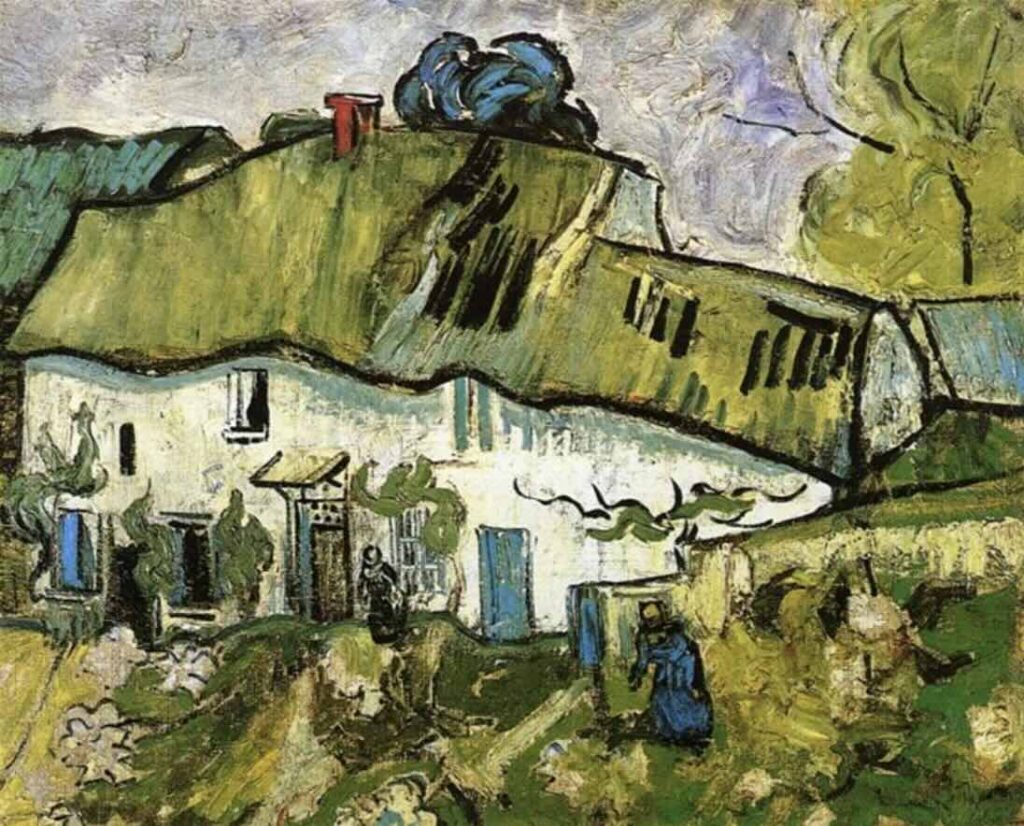
- Why Famous: The bold colors and intense emotion characteristic of Van Gogh are evident in this painting, which shows a rustic farmhouse scene infused with a sense of solitude and introspection.
19. The Sower (1850) by Jean-François Millet

- Why Famous: This painting, another of Millet’s, revolutionized the depiction of agricultural labor by portraying the sower with a sense of dignity and heroic scale, inspiring later artists, including Van Gogh.
20. Farmers Planting Potatoes (1884) by Vincent van Gogh

- Why Famous: In this work, Van Gogh conveys the toil and connection to the earth of rural workers. The earthy tones and empathetic portrayal of the farmers highlight Van Gogh’s deep respect for their labor.
Each of these paintings offers a unique window into farm life, whether through the lens of realism, impressionism, or even early modernism. They capture the essence of the rural experience: its hardships, its beauty, and its integral connection to nature.
From Millet’s compassionate depictions of peasant life to Van Gogh’s vivid, emotional landscapes, these works remind us of the timeless and universal appeal of the agrarian world.
Anita Louise Art is dedicated to art education, great artists, and inspiring others to find and create their art. We love art that uplifts and inspires. #ArtToMakeYouSmile! #ArtToMakeYouHappy!
If you are interested to see any of my art, you can find out more by clicking here. If you are interested in what inspires me and my paintings, you can discover more by clicking here.
We have a free newsletter and would love you to be part of our community; you can subscribe to the newsletter by clicking here. If you have any questions, I would be happy to talk to you. You can reach me, Anita, by clicking here.
Subscribe to our Anita Louise Art YouTube Channel filled with great videos and information by clicking here.
Join us for our podcast “5 Minutes With Art.” Spend just 5 minutes a week with us to discover and learn about great art and artists. You can find out more about our podcast by clicking here.
Related Questions
What Was The Focus Of Renaissance Art?
The focus of Renaissance art was on the classics of Greek and Rome, humanist philosophy, and the study of the human figure. Realism was also an essential part of renaissance art. The great artists of the Renaissance also became great anatomists and studied human beings.
By clicking here, you can learn more by reading What Was The Focus Of Renaissance Art?
What Is The Importance Of Art From The Renaissance Period?
Renaissance art is essential as it was a time of rebirth and discovery. Artists like Leonardo da Vinci, Michelangelo, and Raphael were at the forefront of that change, creation, and discovery. Renaissance art has influenced art and artists for many centuries and continues to influence artists today.
By clicking here, you can learn more by reading What Is The Importance Of Art From The Renaissance Period?
Did Leonardo da Vinci Believe In God?
Leonardo did not tell us what his belief in God was, but there is evidence that is left that suggests that he held fast to many Christian ideals and beliefs. People such as the artist and author Giorgio Vasari, who knew him and wrote about him, spoke of his character and what a great man he was.
By clicking here, you can learn more by reading Did Leonardo da Vinci Believe In God?

